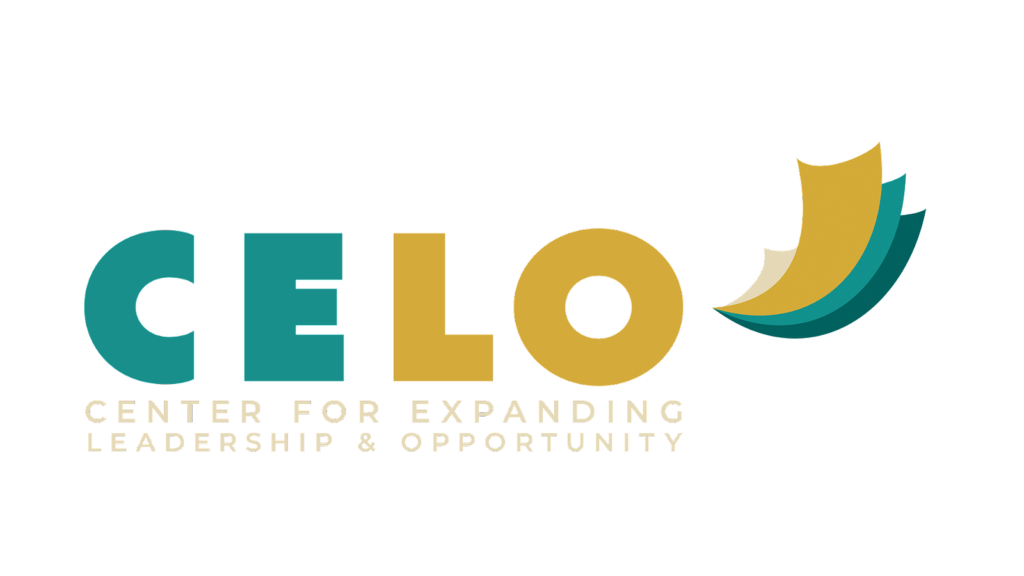New research reveals need for supporting youth-led, youth-driven service opportunities
Young people are extremely interested in service. But how many young people? It depends on how you define “service” – and new research we’re unveiling at the SXSW EDU conference shows us just how important the study and design of youth service opportunities is to understanding its impact on both personal growth and community outcomes.
About the Study
Over the last 18 months, CELO has partnered with The Allstate Foundation on a study of youth service that involved more than 3,000 participants. Like our industry, the study was:
- Highly collaborative, involving nearly 30 individual contributors from across the sector;
- Cross sector, touching on a variety of service areas and practitioners; and
- Intergenerational, ensuring the children, teens, and young adults are represented in our process.
In a nutshell, our study found that youth and youth leaders see the current definition of “youth service” as too old (it was developed in the 1990s), too steeped in the K-12 school system (thus discluding opportunities found from family, friends, faith communities, and other sources), and too little focused on impact/outcomes (leaving youth feeling disconnected from the change they are seeking).
We also learned that youth are seeking meaningful connections through their service efforts, and that barriers continue to prevent some from engaging in the service that interests them.
A New Definition of Youth Service
Working together, we created a more holistic definition of youth service framed around:
- WHAT: Act(s) intended to benefit people and/or communities
- HOW: By enhancing connections and relationships
- WHY: To address issues and strengthen communities
When we broaden the definition of youth service in this way, the number of youth who say they have participated in service jumps dramatically – from just about 23% to nearly 70%. That’s important because it shows us just how hungry youth are for service opportunities, and just how important it is that we design those opportunities to meet their needs.
Design Considerations
Seeing the very high engagement rate and demand for more high-quality programs, our study analyzed the inputs of our participants to outline five key design considerations and action steps that can help shape youth service opportunities to meet this broader definition:
- Youth-led, Youth-driven: Amplify the voices of youth and let them lead
- Access: Ease onramps and pathways into service
- Quality: Engage with the design considerations to maximize the meaningfulness of service
- Reciprocity: Provide training for youth and adults most proximate to youth
- Change Strategy: Reshape scholarship on service to address contemporary realities
In our report, we provide worksheets with more specific suggestions and questions for practitioners to consider as they design and evolve their programs.

Amplifying Youth Voices
We must center young people in our service projects so that they aren’t just participating; youth should also be co-designing, leading, and executing the service opportunities that speak to them.
Think of it this way: You would never design a product without consulting your potential customers. Similarly, we can’t design youth service projects without involving youth.
That doesn’t mean there’s no value in including experienced professionals alongside younger professionals and children seeking to build experiences. Experienced professionals should be there to build structures within which youth can safely experiment and grow; to act as sounding boards; and to elevate and amplify youth voices through their networks. They just shouldn’t be acting alone; youth deserve a voice at the table, and youth will be more inclined to participate when programs are designed with their input in mind.
What The Allstate Foundation is Doing
The experiences shared by the youth and youth-serving professionals we surveyed, interviewed, and studied are helping shape The Allstate Foundation’s new approach to empowering youth to serve and improve communities – and it’s our hope that our findings and recommendations will continue to impact the industry.
“Accelerating youth-led, youth-driven service is essential because it cultivates a greater sense of agency, purpose and connectedness. Youth need to be involved in all aspects of service from research and governance of service-organizations to design and delivery of programs and funding decisions. This is a novel approach to philanthropic giving, and The Allstate Foundation is proud to be on the leading edge of this movement,” said Greg Weatherford II, Youth Empowerment Program Officer for The Allstate Foundation.
The Allstate Foundation’s work to empower youth to serve and improve communities includes:
- Grants to stimulate youth service at community colleges, historically black colleges and universities (HBCUs), other higher education institutions, and state service commissions across the country. More than $1 million was granted in fall 2023, and the Foundation will give more in 2024. A recent grant supported the launch of The Allstate Foundation Youth Action Board, created in partnership with Campus Compact, which will empower 30 youth changemakers to design new service initiatives and award microgrants to other youth service efforts.
- Fellowships on the future of service, elevating both youth and youth-serving organizations and scholars to accelerate results. This strategy is reflected in CELO’s Impact Fellows, a group that builds community through thought partnership and action-oriented projects centered on shaping the next generation of human development strategy.
- Research that drives strategy and calls-to-action targeting educators, service practitioners, community leaders, and youth leaders in an effort to remove barriers and build more meaningful service opportunities.
According to Weatherford: “This is never just about a single grant, a single opportunity, or a single research study. This is a collective call-to-action. I invite the educators, community leaders, and other practitioners who are working alongside young people every day to join me in a reinvigorated, collective effort to spur more youth-led, youth-driven efforts across the nation. Together, we can elevate youth service opportunities to new heights.”
